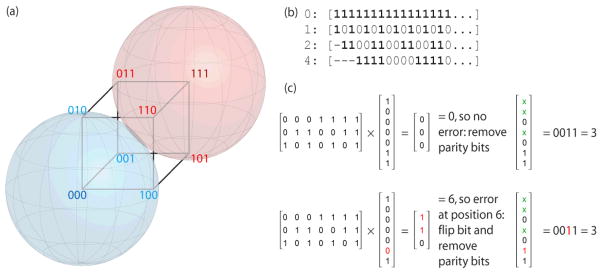Figure 1.
(a) A Hamming code to transmit one bit of information (k=1, n=3). Consider a hypersphere centered at 000 (blue): any single-bit error (010, 001, and 100) falls within a radius of 1 and thus can be corrected. Likewise with the hypersphere centered at 111 (red). (b) Regions of a codeword of length 16 (or longer) checked by parity bits at positions 0, 1, 2, and 4: bits that are checked by each position are marked with 1. (c) Example of decoding a “received” codeword containing the binary value of 3 (0011) (n=7, k=4): the first case contains no errors; the second contains a single-bit error at position 6 that is detected and corrected.

